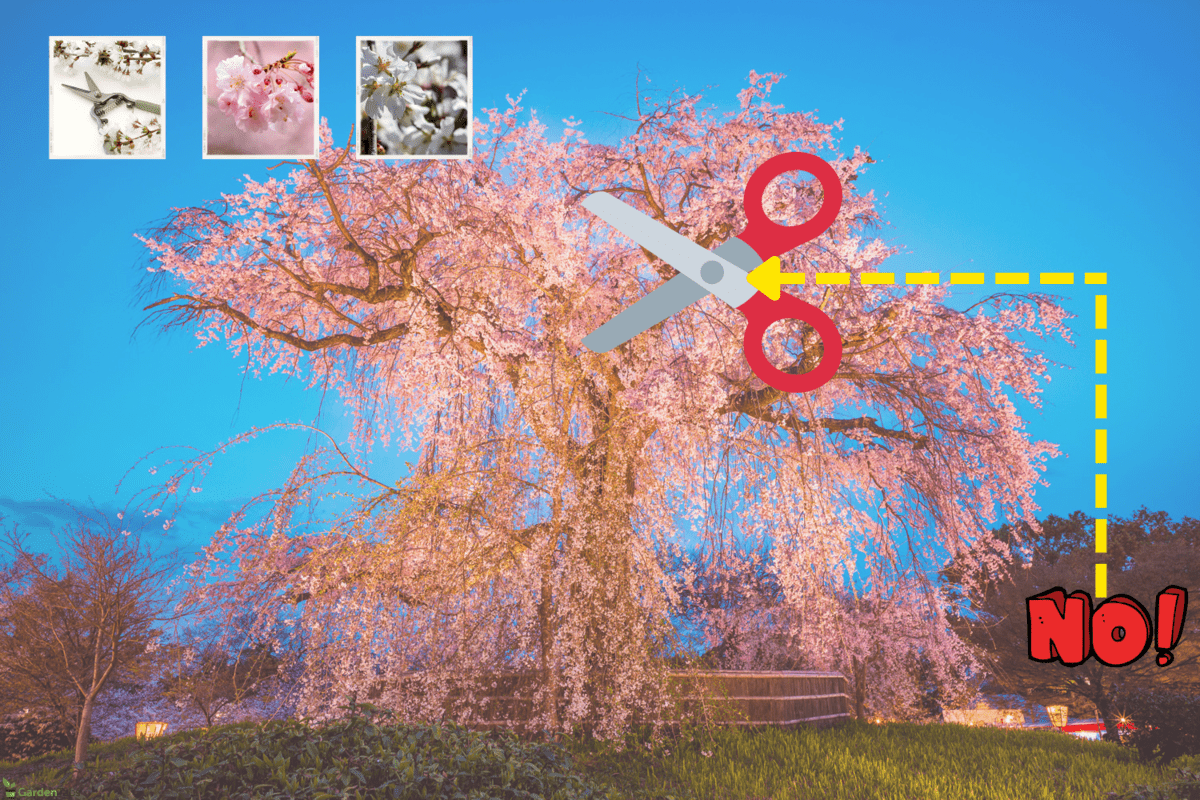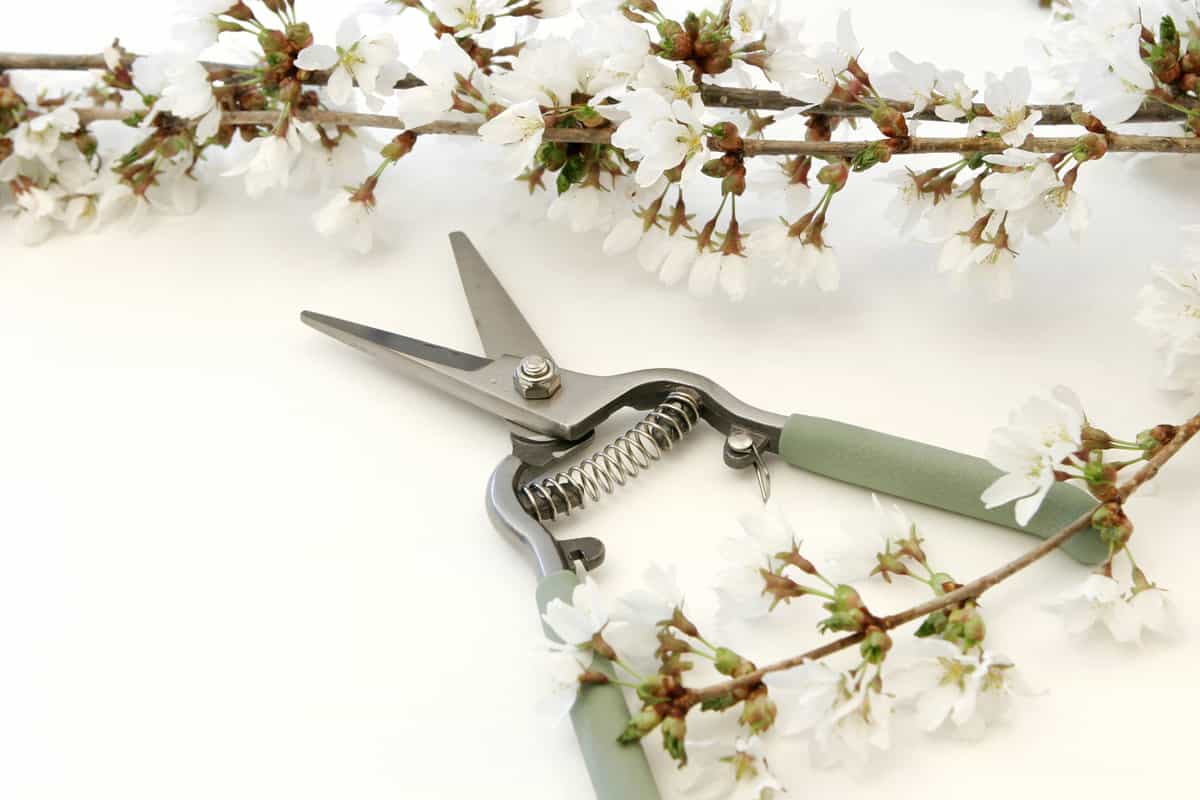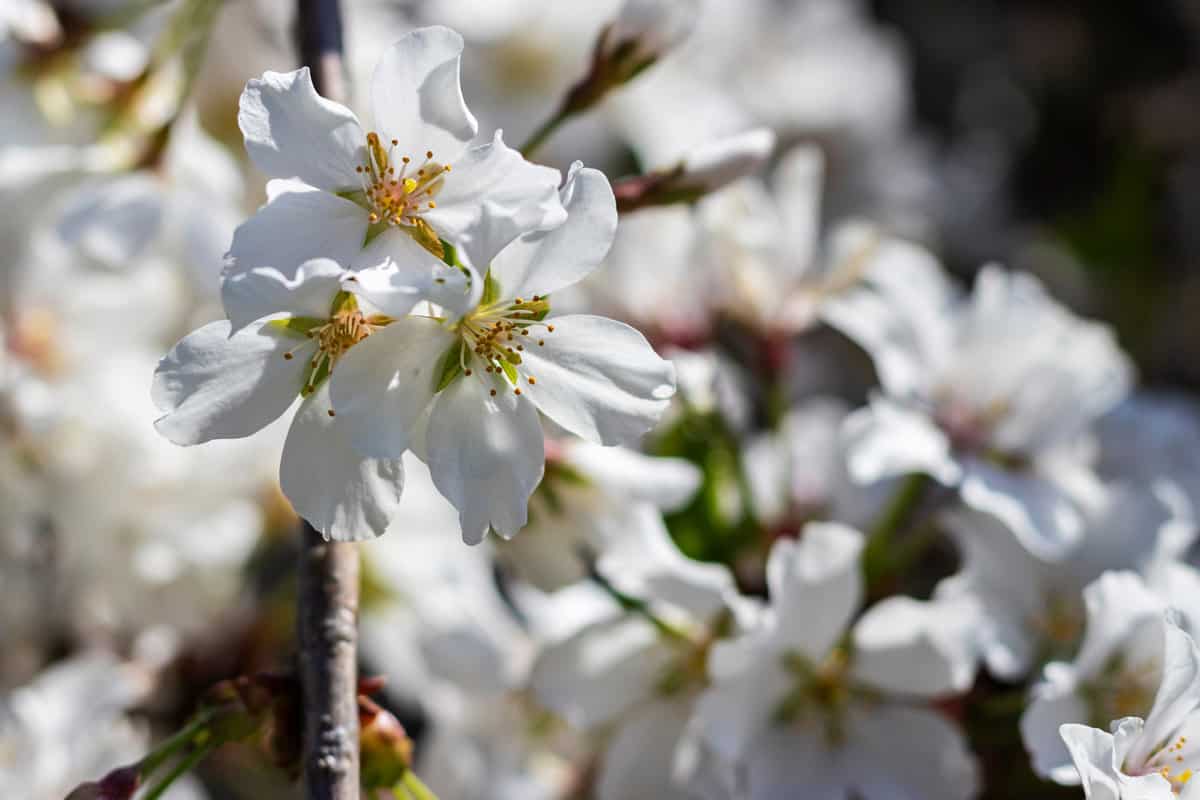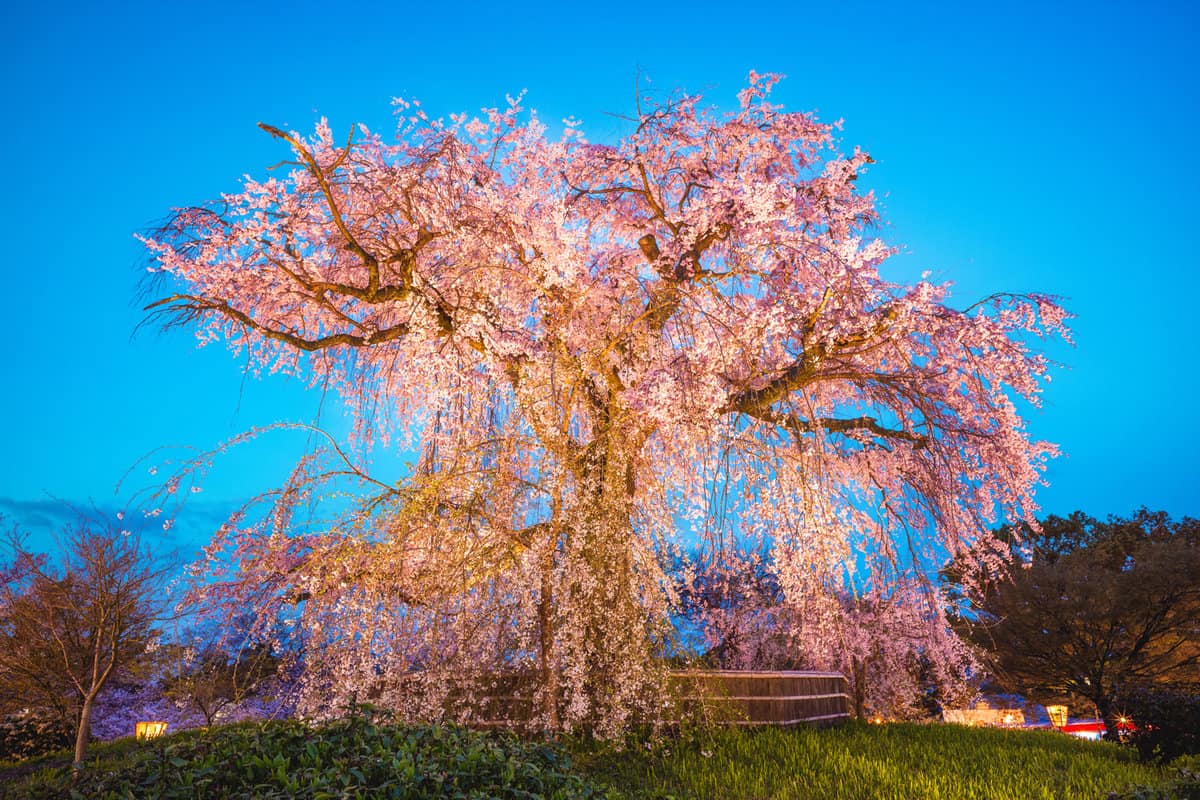Weeping cherry trees require regular pruning to retain their lovely shape. But should the top of a weeping cherry tree be removed during pruning? We did extensive research to provide the right answer.
No, you shouldn't cut the top off a weeping cherry tree, because your tree will no longer have its weeping form. Rework the weeping cherry tree's top into a coherent shape by cutting away extraneous stray limbs. Pruning a weeping cherry tree gives the crown a better shape once the trimming procedures for a tree without a graft are finished.
Countless gardeners who plant such trees are unable to prune them properly. To learn more about correctly pruning your weeping cherry tree, continue reading the article.

Why You Cannot Prune The Top Of Weeping Cherry Trees
The weeping branches damaged by incorrect trimming will no longer droop downward but begin to grow vertically overhead. Weeping cherry trees come in two types, so identifying yours is necessary before you start pruning.
These trees can be either grafted or naturally grown. Therefore, researching how to prune such kinds of trees is a crucial part of cultivating them. Pruning at the appropriate time helps maintain the strength of the branches' crowns.
Grafted Weeping Cherry Trees
The weeping appearance is created manually. The cherry top of one tree is grafted onto another to cause it to weep.
You should immediately check the trunk underneath the crown to identify whether a weeping cherry tree is natively weeping or has been transplanted or grafted onto another tree. A grafted tree has a noticeable breach or bulge about two inches below the crown on the trunk. The crown's pruning strategy will be based on this.
Trim branches that climb directly up on grafted trees. But remember, only to perform this on grafted weeping cherry trees. If you allow these branches to keep expanding upward, you'll ruin the intended appearance of the tree.
Naturally Grown Weeping Cherry Tree
On a naturally grown tree, you need not remove the branches that are developing straight. Instead, let these stand.
Avoid cutting these branches since they eventually arch downward on naturally weeping cherry trees. If you cut these off, the tree will no longer have its weeping shape.
A Weeping Cherry Tree's Pruning Procedure

Your next concern is how to prune them now that you can differentiate the two. The tools used to prune a weeping cherry tree are similar to those used for other trees. Pruning shears, a ladder, safety glasses, and gloves are all you need.
Trimming A Grafted Weeping Cherry Tree
Here is how you properly trim your grafted weeping cherry tree.
- To avoid diseases, disinfect the tools before contacting the tree.
- Begin with the branches that are closest to the soil level. Gardeners should be gently pruned to maintain a six-inch height above the soil.
- Start at the center of the cluster of branches. When they stand erect, these aren't weeping. Remove the attaching branches from the primary ones where they join.
- Cut any broken, sick, or crooked branches as you move across the overhead. The thinner of the two crossed branches should be cut off at the root when being removed.
- Lastly, pay attention to the tree's general contour. Prune as required to keep the tree's weeping appearance.
Click here to see these yard glasses on Amazon.
Trimming A Natural Weeping Cherry Tree
Below are the easy steps to prune a naturally grown weeping cherry tree.
- Ensure that rubbing alcohol is used to sterilize the tools.
- Maintain the outside branches six inches from the soil level and cut any that reach the ground.
- Cut off any branches that are broken or damaged.
- Trim those entangled branches, removing the thin ones.
- Leave any branches that are vertical uncut. They will eventually crouch and sob on a natural weeping cherry.
- Give it one last gentle trimming to keep your weeping cherry tree in the correct form.
Check out these pruning shears on Amazon.
Beware Of These Common Trimming Errors
Trimming decorative trees demands proficiency and knowledge of the process. You might damage the form of the tree by pruning the incorrect branch. Weeping cherry trees are subject to the same rules.
Here are several errors to keep away from.
- Don't clip a genuine weeping cherry's upward-rising branches. Shortly, those branches gradually sag and begin to weep.
- On grafted trees, do not leave erect growing branches. They are not weepy and are vulnerable to wind damage.
- Keep all foundational pillars that are attached to the trunk whole. Don't eliminate them because they are an integral element of its structure that retains the tree's ability to weep.
- Cut heavy branches with the appropriate equipment. Minor incisions on the trunk can leave scars that invite diseases.
Best Time To Prune A Weeping Cherry Tree
Whether natural or grafted, gardeners should trim weeping cherry trees while they are dormant in the late fall or early spring. The tree's development has been completed, and it moves into a resting stage at this period of the year.
When you trim the weeping cherry, there shouldn't be any open blossoms or foliage on the tree. It would help if you cut any aesthetically pleasing areas now.
Additionally, this is the ideal opportunity to repair any harm caused by natural forces. With a bit of practice, this beautification project gets least intimidating and more enjoyable—the rewards of your effort as visible with each blooming season.
Different Weeping Cherry Tree Types
These cherry trees, known as weeping cherry trees, are grown solely for aesthetic reasons. These trees don't yield fruits, but they put on a gorgeous spring show of pink or white flowers.
There are numerous different varieties of weeping cherry trees. However, they all feature distended branches with dark green foliage. Although weeping cherry trees were historically native to Japan, they are now grown in nearly any environment.
Double Weeping Cherry

The double weeping cherry is a native of Japan and is known for its gorgeous canopy or strong weeping shape, which is unique and distinguishing. Grow this weeping cherry tree alongside other cherries to increase and enrich your springtime floral displays.
Rosy-pink blossoms go well with other blooming flowers and are a delightful surprise. This tree also functions admirably against such a naturalistic background and looks fantastic once incorporated into the environment.
Small fruits and spring blooms may also draw wildlife, contributing to the thrill all year round. When contrasted to certain other flowering cherry trees, this decorative cherry tree seems to be quite pest-resistant.
Landscape architects easily choose the twin weeping cherry tree due to its low maintenance requirements and wide range of adaptation. Also, this type of weeping cherry is capable of surviving in a variety of climatic settings.
Dwarf Weeping Cherry
Dwarf weeping cherry trees are diminutive blossoming trees. The flowering trees and shrubs have supple, pliable limbs resulting from their drooping growth characteristics. The little cherry blossom trees appear to be weeping due to arched branches flowing down the other side of the tree.
The smaller varieties of larger species include small weeping cherry flower trees. By purchasing the dwarf cherry tree varieties, you can admire this little weeping tree in your landscape with much less upkeep. The draping branches and lovely springtime flowers of miniature weeping cherry blossom trees represent their defining features.
Sakura, a type of Japanese cherry tree, represents the most beautiful dwarf weeping cherry tree. The cherry flowers on these diminutive trees resemble powdered puffs due to their massive, exquisitely pink blossoms and a profusion of curled petals.
Snow Fountain Weeping Cherry

The Snow Fountain is a stunning white dwarf weeping cherry; a lesser selection of snow fountains will work best in more miniature landscapes. Due to their lack of space requirements, these are the optimal option for growing in rows along the land boundary or adjacent to other features like sidewalks or driveways.
These are, nevertheless, mainly utilized generally as decorative accents or as the primary central focus of beautiful gardens due to their incomparable beauty.
Higan Weeping Cherry
Higan weeping cherry trees are long-lived ornamentals that frequently make the best landscape additions. The tree offers aesthetic value all year with intense spring flowers, rich green summertime foliage, vibrant autumn shades, and attractive crimson bark.
These are full, semidouble blooms that develop in bunches of four to eight flowers. Higan cherry trees produce stunning white and pink blossoms in the springtime and remain attractive throughout the year.
They have dark green leaves on top in the summertime and gracefully embrace the change to orange and yellow colors in the fall. Its bark's deep crimson shade shines out during the winter.
Conclusion

Prune grafted trees once a year in the fall and native ones in early spring or during the fall. Never remove the top of a natural weeping cherry that has grown wild. Doing so causes the tree to lose its weeping shape.
On grafted weeping cherries, however, avoid leaving upright developing branches as they are not weepy and are susceptible to strong winds.
Before you go, here are related articles that you may want to read:
How Fast Does A Weeping Cherry Tree Grow?


